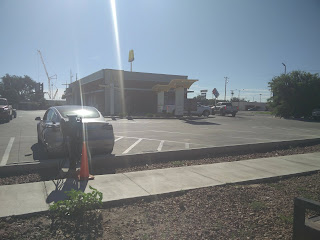How about a combination history and current events post?
As the hurricane approaches Louisiana, I'm reminded of the history of Brashear City where the Confederates had a notable victory. 325 Confederates took 1200 prisoners and significant stores. Following Leander McNelly's tracks, I've visited the site of Fort Star in Morgan City.
https://en.wikipedia.org/wiki/Morgan_City,_Louisiana
Other accounts of the action give McNelly credit for the victory at Brashear City. He is said to have convinced the Ft Star defenders that the Confederate force was much larger than it actually was; they surrendered without a major battle. Before that action, McNelly had participated in the Confederate invasion of New Mexico and, after the War of Northern Aggression, he went on to greater fame as a Texas Ranger with his "get tough" campaign against Mexican bandits and rustlers in the lower Rio Grande Valley.
https://en.wikipedia.org/wiki/Leander_H._McNelly
McNelly is one of my heroes. I've visited his grave, near Burton, several times.
I found an older post on McNelly:
https://wmckemie.blogspot.com/2020/01/web-journey.html
which includes a very interesting Austin genealogy connection with McNelly.
In the past few decades, Hwy 90 has been elevated for many miles through the swamps on both sides of Morgan City. The highway now goes over Morgan City rather than through it. Hwy 90 is to serve as a major evacuation route for New Orleans.
An aside. The Corp of Engineers has major structures at the intersections of the Red, Mississippi and Atchafalaya Rivers to insure that New Orleans remains on the main Mississippi channel. In flow from Red and Mississippi is controlled in out flows to Atchafalaya and Mississippi. The Mississippi has been threatening to take the more western Atchafalaya route to the Gulf of Mexico for 100+ years. Major flooding could destroy the structures and allow the Mississippi to have it's druthers which would put Morgan City on the main channel. The structures currently give New Orleans about 2/3 of the flows of Red plus Mississippi and the Atchafalaya gets the other 1/3.
Another aside. A couple of years ago, I made a most satisfactory trip to Grand Isle, then up Bayou LaFourche, through Thibodeau, to the origin at Donaldsonville on the Mississippi. The Bayou, before human intervention, was one of the many outlets of the Mississippi to the Gulf o Mexico. It goes through around 100 miles of delta country that is very near sea level. I guess maximum elevation of about 20'. Grand Isle is not a place you want to be during a hurricane; all roads withing about 100 miles are likely to be under water.
That trip was stimulated by recommendations of Grand Isle from volunteer "park hosts" at Hueco Tanks State Park east of El Paso. Where I stopped for a few hours for a charge. Grand Isle is one of their favorite places to serve as "park hosts".
9/2/2021
After the hurricane. Houma is spread out up and down a bayou. Bayou Cane, I think. Bayou Cane is parallel and west of Bayou Lafourche. Lots of good eateries there. Damage/flooding over the entire area. Thibodeau, Grand Isle, Houma, etc. Maybe i should tour the area in a couple of months to see about the recovery. Years after Katrina, many Nawlins neighborhoods remained devastated.






